Hesperornithoides miessleri – Helping to Map Out the Bird Family Tree
A joint team of British and American palaeontologists have announced the discovery of a new species of dinosaur that roamed the Late Jurassic of Wyoming. The specimen consisting of both cranial and postcranial material lived around 150 million years ago and it has been tentatively placed within the troodontid branch of the Paraves part of the Theropoda. It could help scientists to better understand the evolutionary relationships between feathered dinosaurs and true birds and it raises intriguing questions as to when powered flight evolved within the Dinosauria.
The little dinosaur, estimated to have measured less than a metre in length (single known specimen is either an adult or a sub-adult), has been named Hesperornithoides miessleri.
A Life Reconstruction of the Newly Described Dinosaur H. miessleri
Picture credit: Gabriel Ugueto
Hesperornithoides miessleri – An Inhabitant of Wetlands
Writing in the academic journal PeerJ, the authors which include scientists from the University of Manchester, report the taphonomy of the fossil material suggests that this dinosaur was an inhabitant of wetland environments for at least a portion of its life history. The fossil material was actually discovered back in 2001, whilst excavation work was being carried out on the fossil material associated with Supersaurus.
The fossil comes from Converse County (Wyoming), from strata making up the middle portion of the famous Morrison Formation. The fossil-bearing strata from the “Jimbo Quarry” has been variously dated to the Oxfordian and Tithonian ages of the Jurassic.
Full Skeleton of Hesperornithoides miessleri
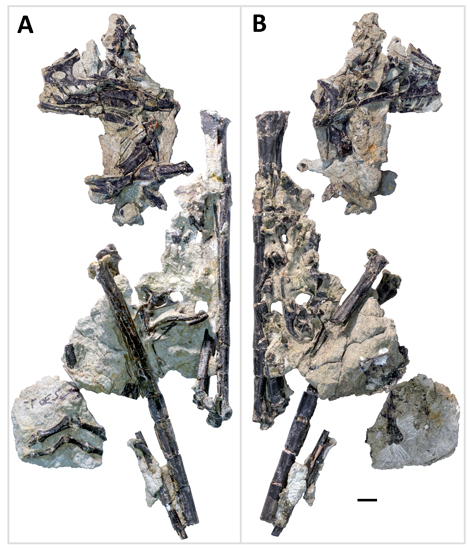
Picture credit: Levi Shinkle
A Resident of the Famous Morrison Formation
The Morrison Formation is famous for its vertebrate fossils, including many examples of dinosaurs, such as Allosaurus, Ceratosaurus, Diplodocus, Brontosaurus and Camarasaurus. The carnivorous Hesperornithoides is the smallest dinosaur described to date from Wyoming.
Palaeontologist Bill Wahl (Wyoming Dinosaur Centre), a co-author of the scientific paper, recalled how excited the field team were when they uncovered the block containing the partially articulated bones.
He stated:
“We were removing a ledge of overburden rock and found, unfortunately with a shovel, some tiny, delicate bones poking out. We immediately stopped, collected as much of the bones as possible and spent the next few days frantically searching for more. Only after some of the bones were cleaned did we realise that we had found something spectacular.”
Hesperornithoides miessleri – Donated to the Big Horn Basin Foundation
In 2005, the fossil specimen was donated to the Big Horn Basin Foundation, a research and education-based not-for-profit organisation that was merged with the Wyoming Dinosaur Centre back in 2016. This is how Hesperornithoides miessleri came into the Wyoming Dinosaur Centre’s fossil collection. The fossil, now known as WYDICE-DML-001, was nicknamed “Lori” and was examined by Dean Lomax (University of Manchester) and co-author of the study back in 2008, a successful crowdfunding campaign permitted extensive research to be undertaken.
Dean commented:
“I remember the first time I laid my eyes on this little dinosaur. Even back then, I knew it was a significant discovery. But, it wasn’t until 2015 when our dino team formed and we began to study ‘Lori’ in much more detail than ever before.”
Reconstructed Quarry Map of “Lori” (Hesperornithoides miessleri)
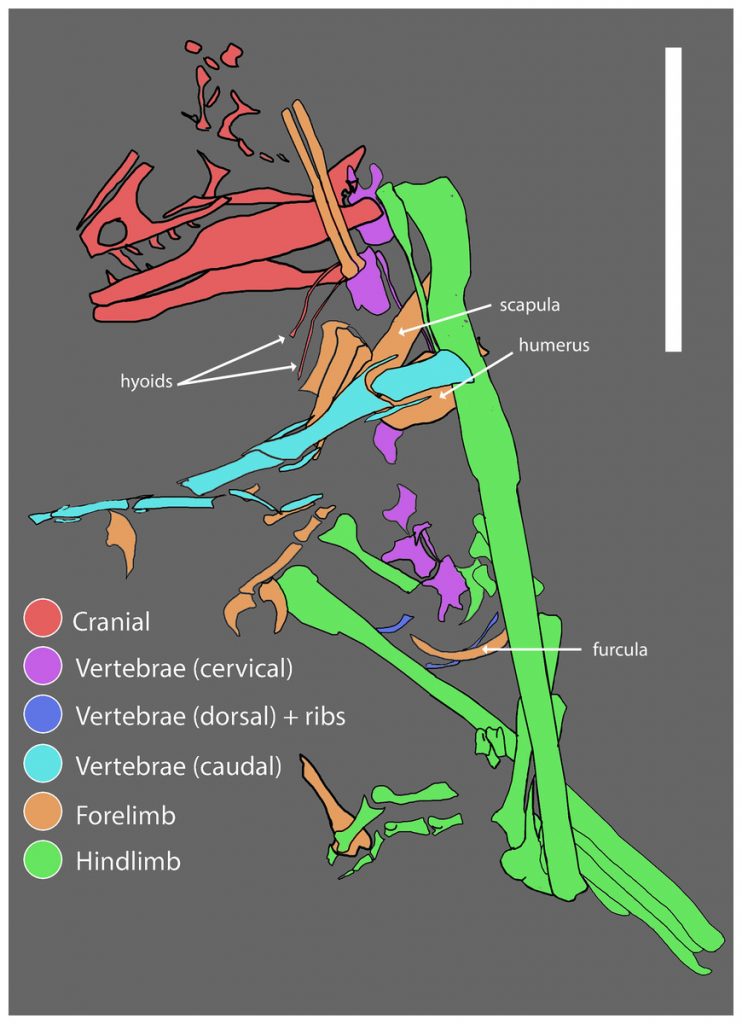
Picture credit: PeerJ
Visit the website of the British palaeontologist Dr Dean Lomax: British Palaeontologist Dr Dean Lomax.
Found on Private Land
The specimen was found on private land owned by the Miessler family. The trivial name honours their help, support and assistance in bringing this little theropod to the attention of the scientific community. The genus name is a combination of “Hesper”, referring to its discovery in the American West and “ornis” a nod to its very bird-like anatomy.
A Reconstruction of the Skeleton of Hesperornithoides miessleri
Picture credit: Scott Hartmann
A Key Conclusion of the Study
A key conclusion of the scientific paper relates to the origin of powered flight within the Dinosauria. Hesperornithoides was very probably entirely terrestrial. It could not fly, but it has a very bird-like body, suggesting that many features associated with an avian anatomy evolved in dinosaurs that lived out their lives on the ground. It is the oldest dinosaur of this type, known from more than just teeth fossils from North America. The terrestrial and flightless lifestyle is consistent with the base of Paraves, and with the base of paravian subclades, suggesting that avian flight evolved within the Avialae, most likely in the Late Jurassic or Early Cretaceous.
For models and replicas of dromaeosaurs and other dinosaurs: Beasts of the Mesozoic Dinosaur Models.
Lead author of the paper and PhD student at the University of Wisconsin-Madison, Scott Hartman stated:
“We wanted to expand the dataset used to test dinosaur-bird relationships, so we added hundreds of new species and tens of thousands of new characters. We found that Lori is a primitive member of a group of dinosaurs that includes Troodon, but perhaps more importantly we discovered that the smaller details of the family tree of bird-like dinosaurs isn’t quite as resolved as some researchers would claim.”
Scott Hartman continued:
“For example, it only takes a few changes in the dataset for Hesperornithoides to be found as a closer relative of Velociraptor than of Troodon. One robust finding we did come up with is that even as the interrelationships changed, the primitive members of all these groups were non-flying ground dwelling dinosaurs. That means that some small relatives of Velociraptor such as Microraptor that looks like it could have glided evolved this separately from the modern bird family.”
Hesperornithoides Cranial Material
Picture credit: Levi Shinkle
The scientific paper: “A new paravian dinosaur from the Late Jurassic of North America supports a late acquisition of avian flight” by Hartman, S., Mortimer, M., Wahl, W. R., Lomax, D. R., Lippincott, J. and Lovelace, D. M and published in PeerJ.
Everything Dinosaur acknowledges the help of a media release from the University of Manchester in the compilation of this article.
The Everything Dinosaur website: Everything Dinosaur.


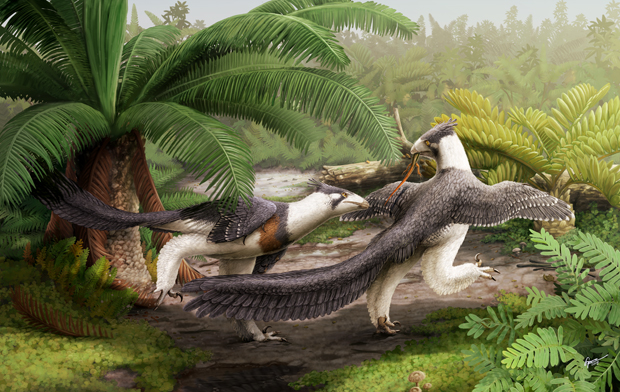
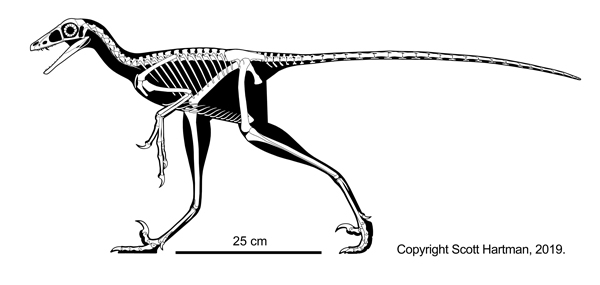
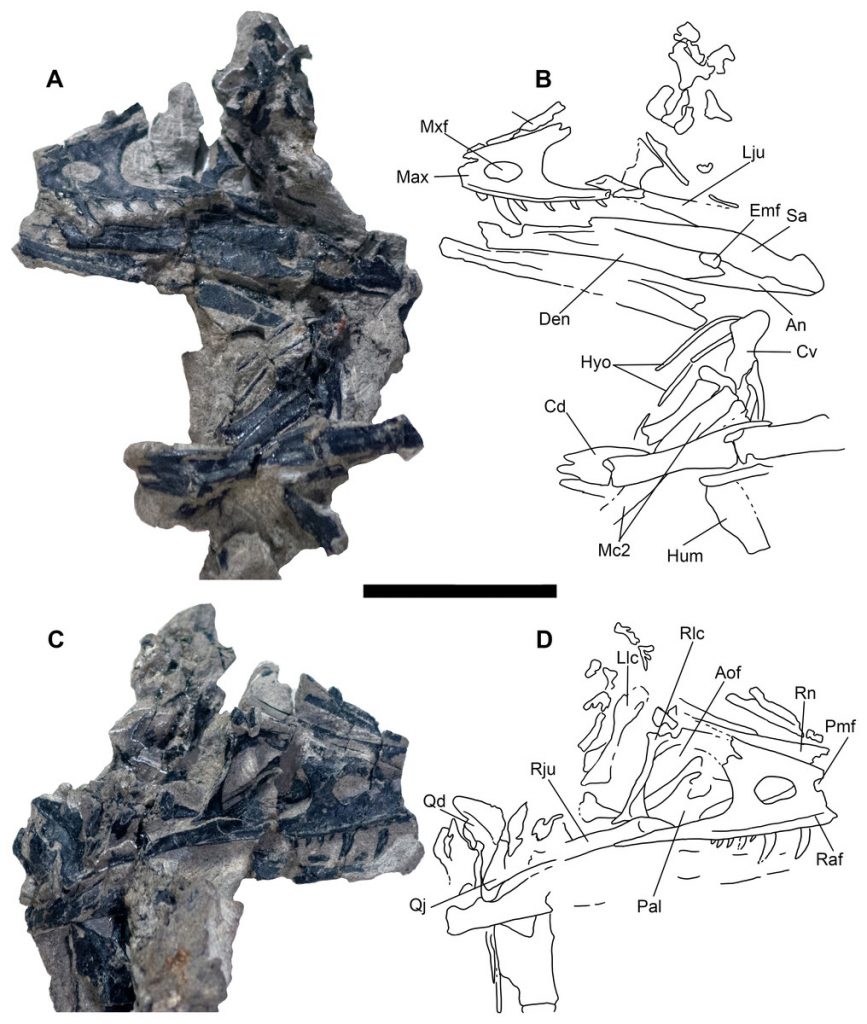




Leave A Comment